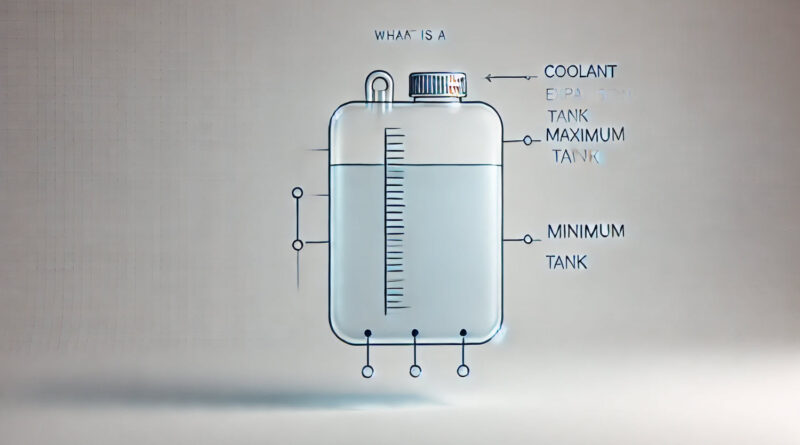What Is Coolant Expansion Tank, and Why Does It Matter?
You might not think much about the coolant expansion tank under your car’s hood, but this small and often overlooked part plays a big role in keeping your engine happy and healthy. It’s like the unsung hero of your car’s cooling system, quietly making sure everything runs smoothly and doesn’t overheat.
If you’re wondering what it does and why it’s so important, let’s break it down into simple, relatable terms.
What Does a Coolant Expansion Tank Do?
The coolant expansion tank, sometimes called an overflow tank, is where your car’s cooling system stores extra coolant. When your engine heats up, the coolant inside it expands and needs somewhere to go. That’s where the expansion tank comes in—it’s the safety net that catches this extra fluid.
Later, when the engine cools down, the coolant contracts and flows back into the radiator. This process keeps the cooling system balanced and ensures your engine stays at the right temperature.
How Does It Work?
Here’s a quick rundown of how the coolant expansion tank does its job:
- Coolant Expands: As your engine heats up, the coolant inside expands, increasing the pressure in the radiator.
- Excess Coolant Moves to the Tank: To relieve this pressure, the radiator cap lets some coolant flow into the expansion tank.
- Coolant Returns to the System: When the engine cools down, the system pulls the coolant back into the radiator, keeping everything running smoothly.
Think of it like a balloon that inflates and deflates to manage pressure—it’s that simple!
Why Is the Coolant Expansion Tank Important?
Without the expansion tank, your car’s cooling system wouldn’t work as efficiently, and that can lead to serious problems. Here’s why this little tank is a big deal:
- Keeps the System Pressurized: The cooling system relies on the right amount of pressure to keep the engine from overheating.
- Prevents Coolant Loss: Instead of spilling out, extra coolant has a safe place to go and can be reused.
- Protects Your Engine: By managing temperature and pressure, the expansion tank helps prevent expensive engine damage.
Signs of a Problem with Your Coolant Expansion Tank
A faulty expansion tank can cause issues that are hard to ignore. Here are some warning signs to watch for:
- Coolant Leaks: If you spot puddles under your car, especially near the tank, there could be a leak.
- Low Coolant Levels: If the tank isn’t holding coolant properly, you might notice the levels dropping more often than usual.
- Overheating: A damaged tank can disrupt the cooling system, leading to an overheating engine.
- Cracks or Damage: Visible cracks or a worn-out cap can cause leaks and pressure issues.
If you notice any of these signs, it’s time to take a closer look at your expansion tank—or better yet, have a mechanic check it out.
How to Keep Your Coolant Expansion Tank in Top Shape
Taking care of your coolant expansion tank is easier than you might think. Here are a few simple steps to keep it in good condition:
- Inspect Regularly: Check the tank for cracks, leaks, or discoloration. A cloudy or brittle tank is a sign it might need replacing.
- Monitor Coolant Levels: Make sure the coolant stays between the “MIN” and “MAX” marks on the tank.
- Top Up with the Right Coolant: Always use the coolant recommended for your car, and never mix different types.
- Check the Cap: A loose or damaged cap can cause pressure problems, so make sure it’s in good shape.
When Should You Replace the Coolant Expansion Tank?
If your expansion tank is damaged or showing signs of wear, replacing it is a straightforward fix. Here’s what you can do:
- Cool the Engine: Never work on the cooling system while the engine is hot—it’s dangerous!
- Drain the Coolant: Use a container to catch the coolant before removing the old tank.
- Swap the Tank: Remove the old tank, connect the hoses to the new one, and secure it in place.
- Refill the Coolant: Top up the system with coolant and check for any leaks.
If DIY isn’t your thing, a mechanic can replace the tank quickly and easily.
The Difference Between a Coolant Expansion Tank and a Radiator
It’s easy to confuse the coolant expansion tank with the radiator, but they serve different purposes. Here’s a quick comparison:
| Feature | Coolant Expansion Tank | Radiator |
|---|---|---|
| Purpose | Stores excess coolant | Cools the engine |
| Location | Separate from the radiator | Directly connected to the engine |
| Role in Pressure | Manages overflow and return flow | Handles heat dissipation |
They work as a team, but each has its own job in the cooling system.
When to Seek Professional Help
If you’re dealing with persistent coolant leaks, low levels, or an overheating engine, it’s time to get a professional involved. Ignoring these issues can lead to bigger and more expensive problems down the road.
Final Thoughts
The coolant expansion tank might not grab your attention like a sleek exterior or powerful engine, but it’s a key player in your car’s cooling system. By managing pressure, storing extra coolant, and protecting your engine from overheating, this little tank ensures your car runs smoothly.
Regular checks and maintenance can go a long way in preventing headaches. So, the next time you’re under the hood, take a moment to appreciate the hardworking coolant expansion tank—it’s a small part doing a big job!
Buying a used VW. Buying used vauxhall, BMW, Jaguar, Ford, Volvo, Range rover, Bentley, Aston Martin, Porsche, Ferrari, Lamborghini, Maserati, Hyundai, Tesla, Honda, Pagani

